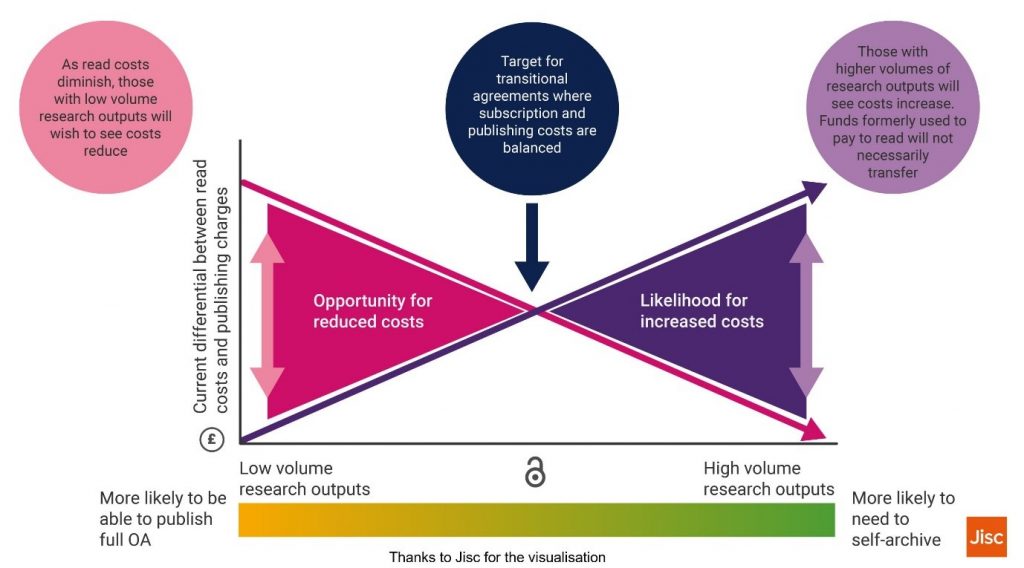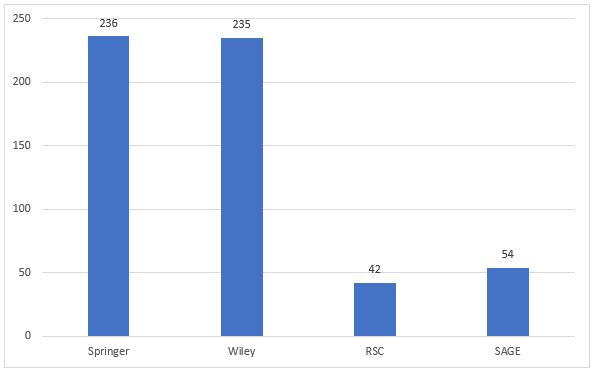No double dipping! The rise of transformative publisher agreements in the transition to full Open Access
The impact of Plan S
In 2018 a group of funders and national research agencies launched Plan S, an initiative with the central aim that by January 2021 “…all scholarly publications on the results from research funded by public or private grants provided by national, regional and international research councils and funding bodies, must be published in Open Access Journals, on Open Access Platforms, or made immediately available through Open Access Repositories without embargo.” Implicit in this goal is the intention of funders to move away from supporting the ‘hybrid’ model of publishing, whereby journals offer a paid open access (OA) option for authors to make their paper freely available upon publication but continue to charge a subscription fee for the rest of their content.
As with many other institutions, at Imperial we are recipients of block grants from certain funders, which authors acknowledging support from those funders can use to pay for individual Article Processing Charges (APCs) in both fully OA and hybrid journals. Although we have already introduced some restrictions on when we will pay for hybrid APCs, due to limited funds, with funders increasingly adopting the Plan S Principles authors may be concerned that they will soon be completely prevented from choosing OA publishing options in hybrid journals.
This is where Plan S Principle 8 comes in, which states that “…as a transitional pathway towards full Open Access within a clearly defined timeframe, and only as part of transformative arrangements, Funders may contribute to financially supporting such arrangements”. So, while Plan S funders will no longer support the payment of individual APCs to hybrid journals, institutions are able to redirect OA funds to pay for arrangements with publishers to transition away from the hybrid model towards being fully OA (until the end of 2024).
Read & Publish agreements
There are several types of transformative arrangements, but perhaps the most common are Read & Publish agreements. Instead of institutions (generally via their libraries) paying separately for subscriptions and OA fees for the same journals (aka ‘double-dipping’), Read & Publish agreements combine the costs. This provides those affiliated with the institution access to journal content that is still paywalled, as well as allowing authors to choose the OA option for their publications at no further cost.
As more of the content in hybrid journals becomes free for all to read in the transition to becoming fully OA, the proportion paid for the ‘Read’ part of the deal will decrease, and the proportion paid for the ‘Publish’ part will increase accordingly. While these kinds of arrangements precede the announcement of Plan S, their uptake has undeniably been accelerated by the initiative. Prior to 2020 Imperial had signed up to one Read & Publish agreement (with Springer in 2016), but we now have 11 In place, all negotiated by Jisc for Imperial and other institutions.

Read & Publish agreements can offer an alternative route for authors to publish their work OA in cases where we would normally not be able to provide funding for an APC. Unlike our OA block grants from funders, which only authors acknowledging the relevant funding can use, these agreements can be made available to all Imperial staff and students (usually with the requirement that they are the corresponding author). The process should generally be much quicker and easier for authors, as they do not need to request an invoice or make a separate payment for an APC, and publishers have also been encouraged to improve the workflows and dashboards used by authors and the staff who administer the agreements within institutions.
Not a panacea
However, it can be argued that such agreements do not solve all of the problems that are present in the existing hybrid OA model. To the authors that are eligible for these agreements it may feel that they are getting free and unlimited OA for their work, but there are still high costs involved to sign up for the deals in the first place, and often there are limits on how many papers can be made OA in a year. This has recently been seen with the restrictions introduced to the Wiley agreement, whereby only authors supported by certain funders are currently eligible for inclusion in the agreement due to high levels of demand.
During an OA Week with a theme of “Taking Action to Build Structural Equity and Inclusion”, it is also important to highlight that such agreements can be seen as perpetuating global inequalities in access to OA publishing, as is argued by Jefferson Pooley on the LSE Impact Blog. A transition away from the hybrid model towards journals being fully OA should benefit everyone wanting to access the outputs of research as a reader. Nevertheless, it is only those authors who are affiliated with institutions wealthy enough to pay for the agreements (predominantly research intensive and in the global North) who are in a position to directly benefit from the OA publishing aspect.
Others who wish to publish OA will continue needing to find alternative routes, such as applying for APC waivers, submitting to OA journals that do not charge APCs, or self-archiving. This is not to say that these other routes are not valid – the option to self-archive (aka ‘green’ OA) is also a key part of the Plan S principles – but for those authors who do not have ready access to APC funds or publisher agreements there is understandably a sense of inequality.

(https://twitter.com/ChrisBanks/status/1169530088276340736)
A shift in gold OA at Imperial?
At Imperial we are fortunate to be able to offer our authors a range of different ways to make their research outputs OA, via both the green and gold routes. While the majority of our time (and money) in the gold section of the OA Team is still spent on paying individual APC payments from the funds that we administer (totalling 853 payments from 1 Oct 2019 – 30 Sep 2020), an increasing number of articles are now being made OA through our aforementioned Read & Publish agreements.

The graph above shows the numbers of papers made OA via our four most used agreements (with Springer, Wiley, the Royal Society of Chemistry and SAGE) totalling 567 papers between 1 Oct 2019 – 30 Sep 2020. We also have agreements in place with the Company of Biologists, European Respiratory Society, IOP, IWA, Microbiology Society, Portland Press and Thieme. As previously mentioned, only the Springer agreement was in place prior to 2020, and we are in the process of signing more agreements. We would therefore expect the figures for next year to be even higher, and to perhaps even overtake the number of APCs we pay for individually.
For details on Imperial’s current Read & Publish agreements, as well as other publisher arrangements and discounts available to Imperial authors, please see our Publisher agreements and discounts page.


